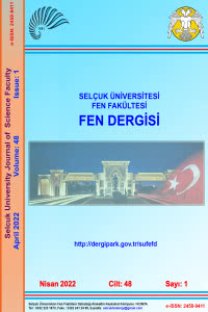DETERMINATION OF LOCAL QUASI-GEOID IN CENTRAL ANATOLIA FOR ENGINEERING AND GIS PURPOSE
Requirement for a high resolution geoid model has increased substantially during the last few decades especially with the advent of Global Positioning System (GPS). Many countries across the world have already developed their own geoidal model which serve as the means of deriving orthometric heights from GNSS observations. On the other hand, the need for transformation of the ellipsoidal heights derived from GNSS observations to the physical orthometric heights has forced geodesists to determine the high precision local geoid heights. Besides, because orthometric heights are used in engineering and GIS applications, local quasi-geoid determination studies have become especially important. As it is well known, Turkey is situated on a tectonically very active region and earthquakes occurring in different times cause deformations in heights of levelling points of Turkish National Vertical Network. On the other hand, National Mapping Agency of Turkey (GDM: General Directorate of Mapping) which is responsible for the establishment and maintenance of national geodetic networks compute geoid models for whole Turkey and release them for public use in different periods. These GDM-computed geoid models are called “hybrid geoid” models. Hybrid geoid models are computed with the combination of gravimetric geoid models and geoid heights on the GPS_levelling points. And it is also known that the absolute accuracies of these geoid models are nearly at the 10 cm level or even worse. But, the requested accuracy is about better than 5 cm. Hence, in order to prove that the required accuracy levels can be achieved, a local gravimetric and quasi-geoid determination project using the resources of Selçuk University was initiated. Project area has been planned to cover a limited part of Central Anatolia including Konya. Necessary basic data (gravity, levelling etc.) for this project have been obtained in the field by performing observations/measurements. Some other necessary data such as absolute gravity values have been obtained from GDM. And as the next phase, high accuracy (better than 5 cm) local gravimetric and quasi-geoid models will be computed for the limited part of Central Anatolia using the above mentioned data. In order to be able to reach this goal suitable geoid computations softwares must be used. In this project, we will use DFHRS developed by the Karlsruhe Applied Sciences and GRAVSOFT softwares. According to the results to be obtained from this project, a more comprehensive project will be launched and the project area will be expanded. Thus, additional gravity, levelling and GNSS measurements will be carried out in the new project area for the determination of a high accuracy regional gravimetric geoid.
İç Anadolu Bölgesinde Mühendislik ve CBS Amaçlı Quasi-Geoid Belirlenmesi
Yüksek çözünürlüklü bir jeoit model için gereklilik, özellikle Küresel Konumlandırma Sisteminin (GPS) gelişi ile son birkaç on yılda önemli ölçüde artmıştır. Dünyadaki pek çok ülke, GNSS gözlemlerinden ortometrik yükseklik elde etme aracı olarak hizmet eden kendi jeoidal modellerini zaten geliştirmiştir. Öte yandan, GNSS gözlemlerinden elde edilen elipsoidal yüksekliklerin fiziksel ortometrik yüksekliklere dönüştürülmesi ihtiyacı, jeodezicileri yüksek hassasiyetli yerel jeoit yüksekliklerini belirlemeye zorlamıştır. Ayrıca, mühendislik ve CBS uygulamalarında ortometrik yükseklikler kullanıldığından, yerel yarı-jeoit belirleme çalışmaları özellikle önem kazanmıştır. İyi bilindiği gibi, Türkiye tektonik olarak çok aktif bir bölgede yer almakta ve farklı zamanlarda meydana gelen depremler, Türk Ulusal Dikey Ağının tesviye noktalarının yüksekliklerinde deformasyonlara neden olmaktadır. Öte yandan, ulusal jeodezik ağların kurulması ve sürdürülmesinden sorumlu olan Ulusal Haritacılık Ajansı (HGM: Harita Genel Müdürlüğü) tüm Türkiye için jeoit modelleri hesaplamakta ve bunları farklı dönemlerde kamuya açık hale getirmektedir. Bu HGM-bilgisayarlı jeoit modellere “hibrit jeoit” modelleri denir. Hibrit jeoit modeller, GPS_levelling noktalarındaki gravimetrik jeoit modellerin ve jeodezik yüksekliklerin kombinasyonu ile hesaplanmıştır. Ayrıca, bu jeoit modellerin mutlak doğruluklarının neredeyse 10 cm seviyesinde veya daha da kötü olduğu bilinmektedir. Ancak, istenen doğruluk 5 cm'den daha iyidir. Bu nedenle, istenen doğruluk düzeylerinin elde edilebileceğini kanıtlamak için, Selçuk Üniversitesi'nin kaynaklarını kullanan yerel bir gravimetrik ve yarı-jeoit belirleme projesi başlatılmıştır. Proje alanı Konya dahil olmak üzere Orta Anadolu'nun sınırlı bir bölümünü kapsayacak şekilde planlanmıştır. Bu proje için gerekli temel veriler (yerçekimi, tesviye vb.) Gözlem / ölçümler yapılarak sahada elde edilmiştir. HGM'den mutlak yer çekimi değerleri gibi diğer gerekli veriler elde edilmiştir. Ve bir sonraki aşama olarak, yukarıda belirtilen veriler kullanılarak Orta Anadolu'nun sınırlı kısmı için yüksek doğruluk (5 cm'den daha yüksek) yerel gravimetrik ve yarı-jeoit modeller hesaplanacaktır. Bu amaca ulaşabilmek için uygun jeoit hesaplamalar kullanılmalıdır. Bu projede, Karlsruhe Uygulamalı Bilimler ve GRAVSOFT yazılımları tarafından geliştirilen DFHRS'yi kullanacağız. Bu projeden elde edilecek sonuçlara göre daha kapsamlı bir proje başlatılacak ve proje alanı genişletilecektir. Böylece, yüksek hassasiyetli bölgesel gravimetrik jeoidin belirlenmesi için yeni proje alanında ek yerçekimi, tesviye ve GNSS ölçümleri gerçekleştirilecektir.
___
DFHRS, 2018, Digital Finite Element Height Reference Surface, The User Guide, Hochschule Karlsruhe Technik und Wirtschaft (HSKA).
,Jekeli, C., 2000, Heights, the Geopotential and Vertical Datums, Dept.of Civil and Environmental Engineering and Geodetic Science, OSU, 2000.
Sanso, F., R., Barzaghi, G., Sona, C., Vajani, 2008, GRAVSOFT lecture Notes, International Geoid Service, DIIAR-Politecnico di Milano.
Vanicek, P., 2009, Why Do We Need a proper Geoid? FIG Working Week Eilat May 6, 2009.
